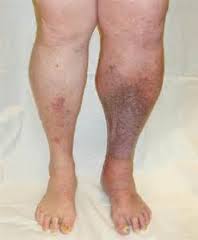Exercise Can Help Dissolve Blood Clots

Various diseases and conditions can increase the risk of blood clots Genetics, advanced age, pregnancy, cancer, and high blood pressure are some of the conditions that can result in blood clots forming in the legs or other areas of your body. While it is apparent that some of these conditions may be unavoidable, it does not preclude the possibility of becoming proactive and finding ways to minimize the risks that you may have. Some of these risks can be offset by medications and lifestyle changes. Consulting with your doctor about your risks and possible treatments is the best way to begin the battle against blood clot formation in the legs.May 8, 2003 – ‘Among overweight people, life-threatening blood clots are common. But exercise can help dissolve blood clots. – That’s the finding from a study, presented at an American Heart Association meeting this week.Obese people are at an increased risk of blood clots and diseases such as stroke. This study helps explain why these complications are occurring in obese people and that simply exercising may help dissolve blood clots.In the study, Colorado investigators looked at 36 sedentary men, all about 60 years old — 12 of whom were lean and 24 obese. Researchers measured the amounts of a critical blood clot dissolver called tissue-type plasminogen activator (t-PA). The overweight men had “significantly blunted” levels of t-PA — 30% less than the lean men.However, once the men got active — three months of walking about 45 minutes a day, five days a week — 10 of the obese men had a 50% higher release of blood clot-dissolving t-PA. In fact, exercise raised their levels similar to those of the lean men.Regular aerobic exercise can help reverse blood clot formation, concludes lead researcher Derek T. Smith, with the University of Colorado Health Sciences Center’.
Unhealthy lifestyle can contribute to blood clot.
Smoking, obesity, too little exercise, sitting for extended periods, and use of hormone based contraceptives have all been linked to increased risk of blood clot development. Obviously, the opposite of each of these lifestyle choices is a positive decision to help prevent blood clots from forming so ….. : Exercise frequently. Walking is a common exercise used to improve blood circulation and dissolve blood clots. Other helpful exercises include jogging, running and cardio-intensive workout programs. However, its vital that a doctor be consulted before starting on any exercise regime (including walking), to confirm that it is the safest and most beneficial exercise for you
Lose weight in a healthy way. Increased amounts of weight can cause strain on your heart as well as your blood flow. Also, the hormone leptin is secreted by fat cells in the body. This hormone is suspected to be a contributing factor in the increased production of blood clots in obese individuals.
Stop smoking. The ingredients in cigarettes have been known to increase the coagulation potential of blood, and many smokers develop blood clots due to this coagulation change. Developed blood clots can block essential blood flow to organs like the heart and brain, and can prove fatal.
Eat foods high in salicylates. Salicylates are blood-thinning nutrients that can be found in fruits as well as medications like Aspirin. A diet high in berries such as strawberries, cranberries and blueberries can help to keep your blood thin and reduce the chance of developing blood clots. A healthy way to stock up on these and other nutritional fruits and vegetables foods in your body is by juicing in the Oscar juicer, either DA900 or DA 1000.
Take medications that has been prescribed by a doctor that dissolve blood clots and prevent the formation of new clots. Of course, this is in conjunction with the above points and hopefully will replace and/or medication. Anticoagulants and other blood clot medications should only be taken under the advisement of your physician, and side effects such as fever and jaundice should be discussed before beginning the medication.
Get active. Regular aerobic exercise can dissolve blood clots, according to a study that was presented to the American Heart Association in 2003. The participants in the study walked for 45 minutes per day, 5 days per week, for about 3 months.
Take an omega-3 supplement daily. Omega-3s can help prevent your blood from forming clots and stave off heart disease and heart attacks. Evening primrose oil is one supplement that offers omega-3s.
Lower your risk factors by lowering your blood pressure. If you smoke, quit. Decrease the fat in your diet as well as the salt intake. Aim for less than 1,500 mg of salt per day.
There are a number of foods that you can easily incorporate into your daily diet that also act as anticoagulants, thinning the blood as their by-products are released within the body during digestion. They react within the body in a manner similar to aspirin and include spices such as garlic, curry powder, cayenne pepper, ginger and cinnamon. Fruits which are high in vitamin C, such as lemons, oranges, strawberries and grapefruit, are also effective as they combine with blood calcium, reducing the ability of the blood cells to stick to each other. Please check these foods with your doctor first if you are on blood-thinning medication or have a bleeding disorder as blood that is too thin and does not clot when needed, can also cause problems.